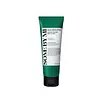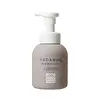What's inside
What's inside
 Key Ingredients
Key Ingredients

 Benefits
Benefits

 Concerns
Concerns

No concerns
 Ingredients Side-by-side
Ingredients Side-by-side

Water
Skin ConditioningMelaleuca Alternifolia Leaf Extract 10%
PerfumingGlycerin
HumectantMethylpropanediol
SolventNiacinamide 2%
Smoothing1,2-Hexanediol
Skin ConditioningC13-15 Alkane
SolventPolyglyceryl-3 Methylglucose Distearate
EmulsifyingCaprylic/Capric Triglyceride
MaskingEucalyptus Globulus Leaf Extract
PerfumingCentella Asiatica Extract
CleansingHouttuynia Cordata Extract
Skin ConditioningArtemisia Capillaris Extract
Madecassoside
AntioxidantAsiatic Acid
Skin ConditioningAsiaticoside
AntioxidantMadecassic Acid
Skin ConditioningCapryloyl Salicylic Acid
ExfoliatingSalicylic Acid
MaskingHippophae Rhamnoides Fruit Extract
Skin ConditioningRosa Canina Fruit Extract
AstringentTocopherol
AntioxidantPortulaca Oleracea Extract
Skin ConditioningChamaecyparis Obtusa Water
MaskingRosmarinus Officinalis Leaf Extract
AntimicrobialAmmonium Acryloyldimethyltaurate/Vp Copolymer
Carbomer
Emulsion StabilisingBetaine
HumectantTromethamine
BufferingAdenosine
Skin ConditioningButylene Glycol
HumectantCitric Acid
BufferingGluconolactone
Skin ConditioningEthylhexylglycerin
Skin ConditioningRosmarinus Officinalis Leaf Oil
MaskingLimonene
PerfumingWater, Melaleuca Alternifolia Leaf Extract 10%, Glycerin, Methylpropanediol, Niacinamide 2%, 1,2-Hexanediol, C13-15 Alkane, Polyglyceryl-3 Methylglucose Distearate, Caprylic/Capric Triglyceride, Eucalyptus Globulus Leaf Extract, Centella Asiatica Extract, Houttuynia Cordata Extract, Artemisia Capillaris Extract, Madecassoside, Asiatic Acid, Asiaticoside, Madecassic Acid, Capryloyl Salicylic Acid, Salicylic Acid, Hippophae Rhamnoides Fruit Extract, Rosa Canina Fruit Extract, Tocopherol, Portulaca Oleracea Extract, Chamaecyparis Obtusa Water, Rosmarinus Officinalis Leaf Extract, Ammonium Acryloyldimethyltaurate/Vp Copolymer, Carbomer, Betaine, Tromethamine, Adenosine, Butylene Glycol, Citric Acid, Gluconolactone, Ethylhexylglycerin, Rosmarinus Officinalis Leaf Oil, Limonene
Ingredients Explained
These ingredients are found in both products.
Ingredients higher up in an ingredient list are typically present in a larger amount.
Butylene Glycol (or BG) is used within cosmetic products for a few different reasons:
Overall, Butylene Glycol is a safe and well-rounded ingredient that works well with other ingredients.
Though this ingredient works well with most skin types, some people with sensitive skin may experience a reaction such as allergic rashes, closed comedones, or itchiness.
Learn more about Butylene GlycolEthylhexylglycerin (we can't pronounce this either) is commonly used as a preservative and skin softener. It is derived from glyceryl.
You might see Ethylhexylglycerin often paired with other preservatives such as phenoxyethanol. Ethylhexylglycerin has been found to increase the effectiveness of these other preservatives.
Tocopherol (also known as Vitamin E) is a common antioxidant used to help protect the skin from free-radicals and strengthen the skin barrier. It's also fat soluble - this means our skin is great at absorbing it.
Vitamin E also helps keep your natural skin lipids healthy. Your lipid skin barrier naturally consists of lipids, ceramides, and fatty acids. Vitamin E offers extra protection for your skin’s lipid barrier, keeping your skin healthy and nourished.
Another benefit is a bit of UV protection. Vitamin E helps reduce the damage caused by UVB rays. (It should not replace your sunscreen). Combining it with Vitamin C can decrease sunburned cells and hyperpigmentation after UV exposure.
You might have noticed Vitamin E + C often paired together. This is because it is great at stabilizing Vitamin C. Using the two together helps increase the effectiveness of both ingredients.
There are often claims that Vitamin E can reduce/prevent scarring, but these claims haven't been confirmed by scientific research.
Learn more about TocopherolWater. It's the most common cosmetic ingredient of all. You'll usually see it at the top of ingredient lists, meaning that it makes up the largest part of the product.
So why is it so popular? Water most often acts as a solvent - this means that it helps dissolve other ingredients into the formulation.
You'll also recognize water as that liquid we all need to stay alive. If you see this, drink a glass of water. Stay hydrated!
Learn more about Water